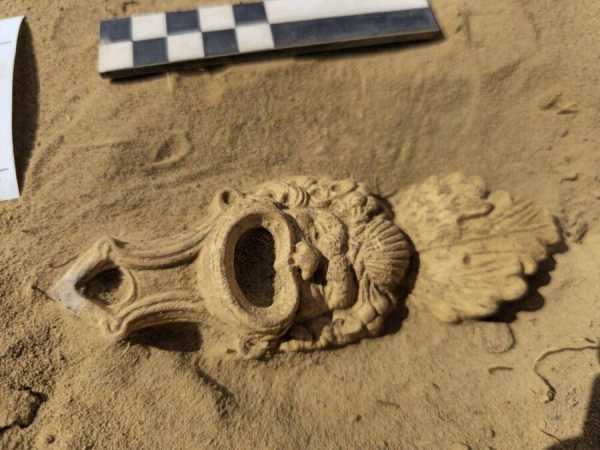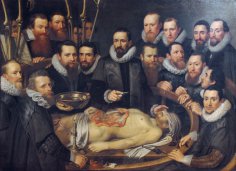This lamp, found in a grave in the vast Roman cemetery of Cuijk, was intended to light the way for the dead to the underworld.

The dramatic features of the oil lamp are perhaps reminiscent of those of a satyr, a Greek mythical creature.
As for the newly discovered oil lamp, its mask is decorated with elaborate carvings of plant motifs. The face is decorated with wide-open eyes and an even wider mouth, curved into a slight smile. The mouth also served as an opening for filling the lamp. Below the head is a neck that serves as the nozzle of the lamp.
On his forehead is a scallop shell, from which protrudes a large headdress of leaves. Curly hair fills the edges of the mask. The thick eyebrows and the shape of the nose suggest that this is the mask of a satyr, a Greek mythical creature that is half man and half goat.
The design of the mask is inspired by the masks traditionally used in Greek theatre. These masks were a common decorative element in Roman architecture.
In the case of such oil lamps, they were believed to symbolically illuminate the path by which the deceased could find and enter the afterlife. However, this lamp is unique due to its number of details and its amazing state of preservation.
Wealth of ancient artefacts found at Cuijk Roman cemetery
Sourse: www.allthatsinteresting.com





